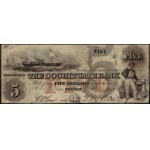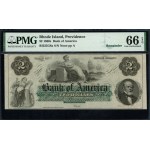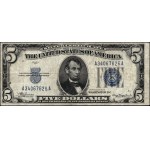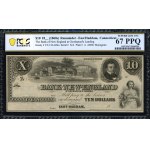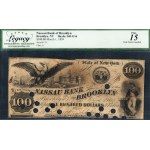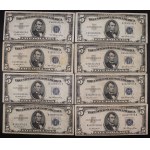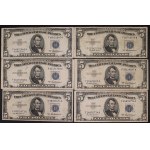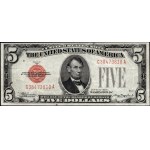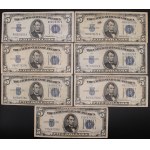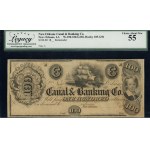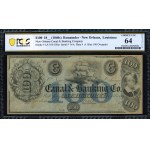Here we have one of the best and most intriguing mysteries of US Banknotes. In 1837 the United States suffered one of its earliest economic crisis' after the collapse of the Second Bank. At that time people were mostly hoarding small change and the need for more circulting small denominations (less than 25 Cents) had risen to an all time high. To alleviate the need for small change at this time a German Born New Yorker named Lewis Feuchtwanger created tokens made of argentan (commonly known as "German silver"), an alloy made of copper, nickel, zinc, tin, and trace metals. It was considerably cheaper to produce than the extraction of copper for the government-minted half-cents and cents. The tokens were minted in denominations of 1 & 3 cents. Feuchtwanger presented his one cent coins to Congress for approval as legal coinage and a cheaper substitute for copper. This was probably the first attempt to circulate "nickel" coinage in the United States. Congress denied his request, but Feuchtwanger persisted in his production and circulation. Laws banning private coinage were not passed until 1864. Between 1837 and 1844 thousands of Feuchtwanger cents came out of his New York City pharmacy. More than a dozen different die casts have been identified by collectors. The tokens were identified by the eagle facing right in a straight position.
That brings us to the mystery of this piece. Legacy has stated they do not know the issuer. The note was printed in 1837 on 50 John Street (probably the most well known printer in NYC at that time). With the same design as featured on the Feuchtwanger tokens. Later on in 1838 through 1840 hard time tokens would be produced with the same emblem. By 1864 this emblem would be identified with Union support. So the mystery remains, was this banknote produced by Feuchtwanger? The denomination, type, place and historical context all give intriguing evidence that may suggest so. We may perhaps never have suffiecient evidence to confirm so, but the historical context is very intruging.
As to the rarity of this piece it is worth noting neither Stacks Bowers or Heritage Auctions have ever offered this piece for sale. They have had other higher denomintions from the same printing press printed at later times but to no connection to this note. Such low denominations from the 1830s in almost any part of the world have become more and more difficult as many were lost in time. For a collector of unique or irreplaceable pieces this is an opportunity not to be missed.






